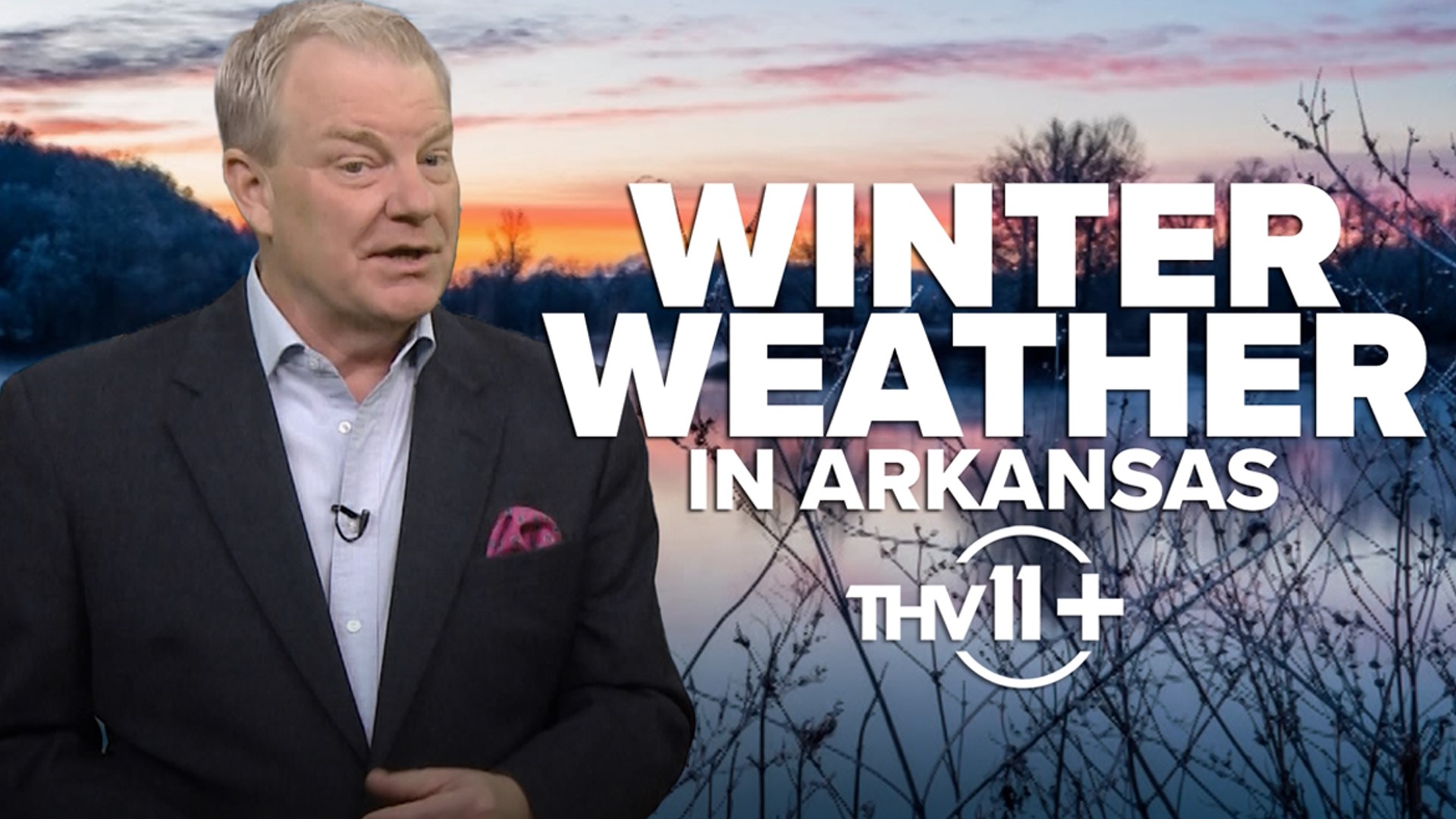LITTLE ROCK, Ark — Wintertime in Arkansas is approaching, which means cold temperatures, rain, sleet, and snow.
You take a look at Arkansas's weather and the last three winters have been under the influence of La Niña, which typically leads to milder and drier conditions. However, this winter, El Niño makes a return.
El Niño occurs in the pacific ocean where water temperatures are warmer than average. These warmer temperatures can bring along certain energies that cause portions of the gulf coast and southeastern U.S. to experience wetter than normal conditions during an El Niño winter.
As for this winter, we’re expecting a moderate to strong El Niño. A common question is how this climate phenomenon influences our chance of snow in Arkansas? Will it lead to a drought, and will it impact your winter utility bills?
Our team of meteorologists used their expertise to help prepare you for this coming winter. Up first, we break down the probability of snow during an El Niño winter.
First and foremost, it's important to know that not all El Niños and La Niñas are the same and that each have different ranks according to their strength. They can be weak, moderate, strong and very strong.
For the past 3 years, the weather pattern was in a moderate La Niña phase. However, the snowfall totals at Little Rock were very different. One year, Little Rock saw more than 20 inches. The next it saw six inches, and last year it saw a lowly .1 inches.
This year, El Niño returns and we forecast it to be a moderate to strong one. This means more moisture will be pumped in from the pacific ocean.
With that in mind, expect a lot of clouds and rain this winter. But, will the cold air be in place for wintry precipitation?
Looking at the record books since 1950 there have been 10 El Niños that have been considered moderate or strong. The coldest air typically shows up during December and January.
For the snow lovers, this means that the odds favor above average snowfall, which is just under four inches in Little Rock.
It's important to remember that it only takes one winter weather event to easily surpass the average. Also, we must remember that snow totals vary county by county.
With the return of El Niño, that means ice storms and freezing rain events also have increased odds because warm air from the pacific will ride over the shallow layer of cold air at the surface. So, get those ice scrapers ready and be prepared for up and downs in the temperature department.
Next up, we break down how El Niño may impact precipitation chances this winter.
If we look back over each El Niño winter since 1950, then strong El Niño winters — like what we're expecting this year — are most commonly associated with above-average precipitation in Arkansas.
That's good news when it comes to our drought here in the state, as Arkansas could use some more moisture. Just think back to September where we saw the 10th driest on record with just under a half inch of rain all month.
With this in mind, we could see improvements to our drought conditions. But that also means potential winter or severe weather scenarios that we will all need to watch out for.
Lastly, the winter of 2022-23 featured what many would consider to be outrageous winter heating bills. So, what about this winter? Here's how El Niño could impact your wallet.
When it comes to how much you'll pay to stay comfortable this winter, it all comes down to supply and demand. With cooler than average temperatures expected in Arkansas, there will undoubtedly be a demand for energy. But don't fret, there's good news!
The United States Energy and Information Office, a federal agency, predicts those in the south will spend on average 15% less than last year on natural gas. Those warming their homes using electricity will spend about the same as last year, or technically 2% more.
Driving the majority of these savings is a better natural gas supply compared to that of last year. El Niño will also play a role in how much we'll pay this year.
While we expect cooler than average temperatures in the south, other parts of the country are forecasted to see above average temperatures. That will ultimately result in a decreased demand, resulting in cheaper fuel prices.

